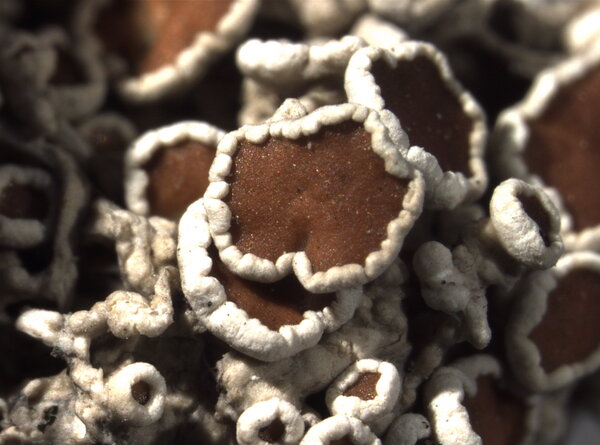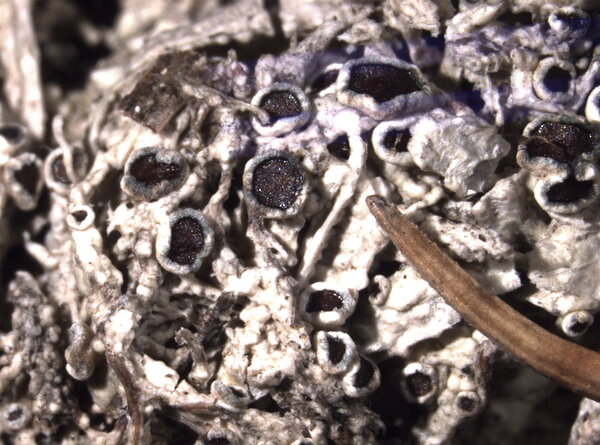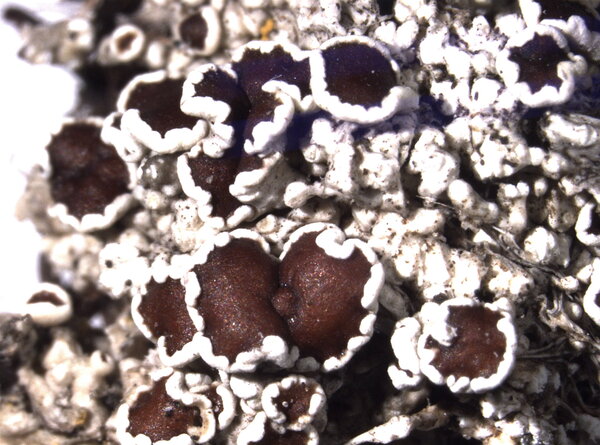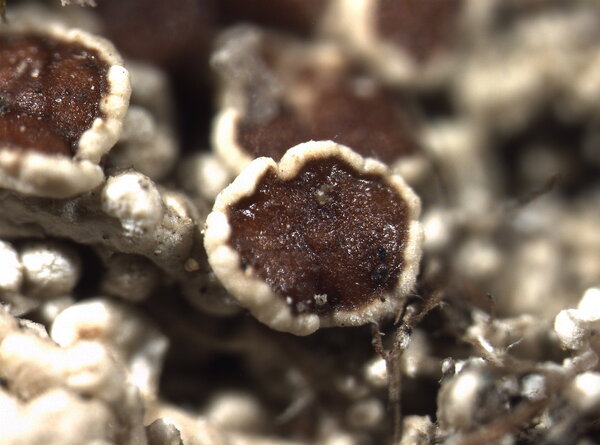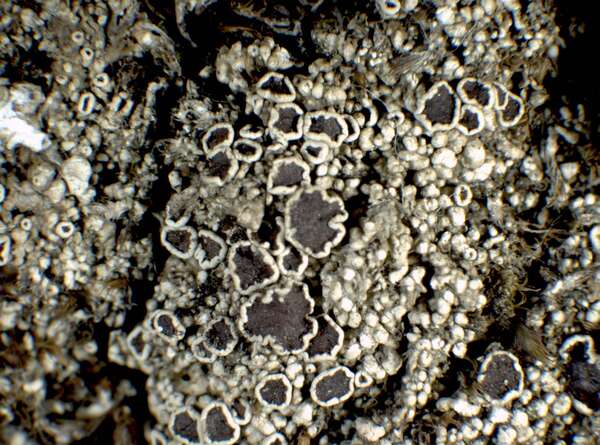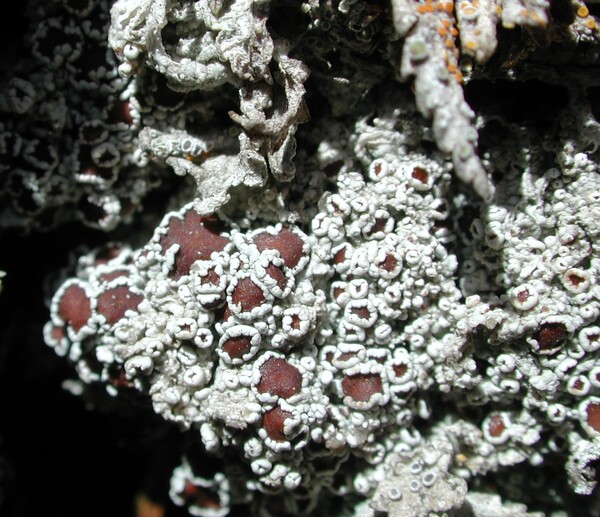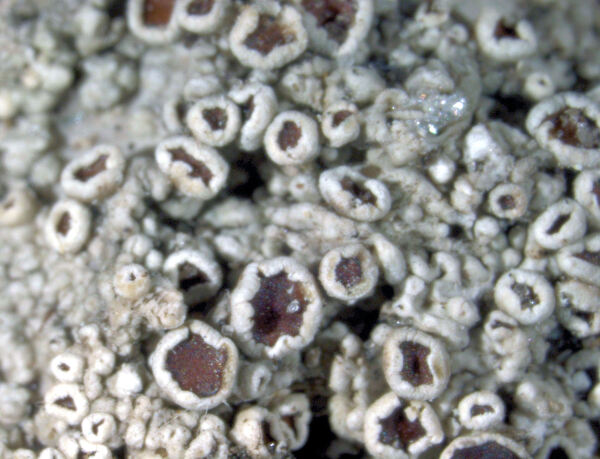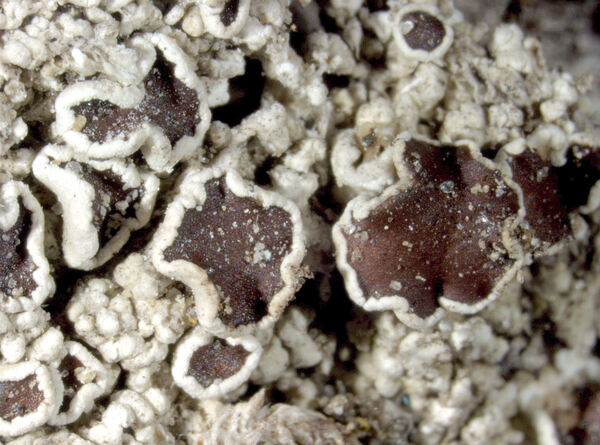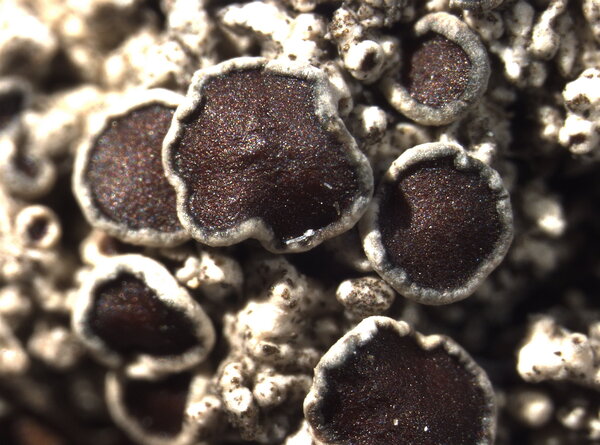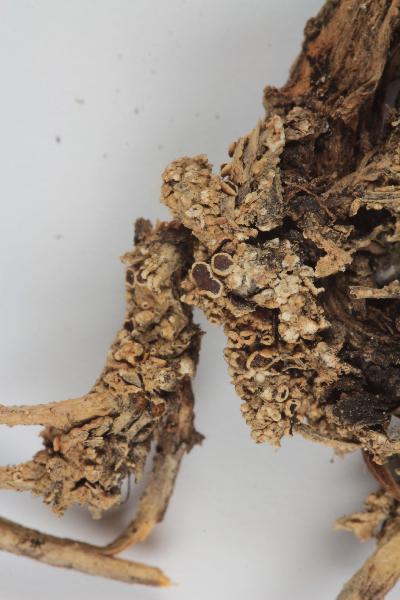Lecanora epibryon (Ach.) Ach. var. epibryon
Lichenogr. Univ.: 396, 1810. Basionym: Lichen epibryon Ach. - Lichenogr. Suec. Prodr.: 79, 1799.
Synonyms: Lecanora subfusca var. hypnorum Rabenh.
Description: Thallus crustose, episubstratic, whitish to pale grey, continuous to warted. Apothecia lecanorine, more or less round or irregular in outline, sessile, strongly constricted to almost substipitate, 0.5-2(-3) mm across, with a reddish brown, often somewhat shiny, epruinose, mostly flat disc and a thick, smooth to crenulate-undulate thalline margin. Thalline exciple to 100 µm thick, containing small, irregular crystals visible under polarized light and not dissolving in K; epithecium red-brown, without crystals, sometimes with small oil droplets; hymenium colourless, 60-90 µm high; paraphyses simple or sparingly branched in upper part, 1.5-2 µm thick at mid-level, the apical cells slightly thickened, to 3.5 µm wide; hypothecium colourless. Asci 8-spored, clavate, very thin-walled, with a K/I+ blue, tall tholus penetrated by a faintly amyloid apical cushion, the wall K/I-, surrounded by a blue outer layer, Lecanora-type. Ascospores 1-celled, hyaline, ellipsoid or narrowly ellipsoid, (11-)12-17(-19) x (6-)7-8(-10) µm. Photobiont chlorococcoid. Spot tests: thallus K+ yellow, C-, KC-, P- or P+ slowly and faintly yellow, UV-. Chemistry: atranorin and variable amounts of zeorin.
Growth form: Crustose
Substrata: soil, terricolous mosses, and plant debris
Photobiont: green algae other than Trentepohlia
Reproductive strategy: mainly sexual
Commonnes-rarity: (info)
Alpine belt: rather common
Subalpine belt: common
Montane belt: absent
Dry submediterranean belt: absent
Humid submediterranean belt: absent
Padanian area: absent
pH of the substrata:
1 2 3 4 5
Solar irradiation:
1 2 3 4 5
Aridity:
1 2 3 4 5
Eutrophication:
1 2 3 4 5
Poleotolerance:
0 1 2 3
Altitudinal distribution:
1 2 3 4 5 6
Rarity
absent
extremely rare
very rare
rare
rather rare
rather common
common
very common
extremely common
Loading data...
Occurrence data
Predictive map
 Current prediction (1981-2010)
Current prediction (1981-2010)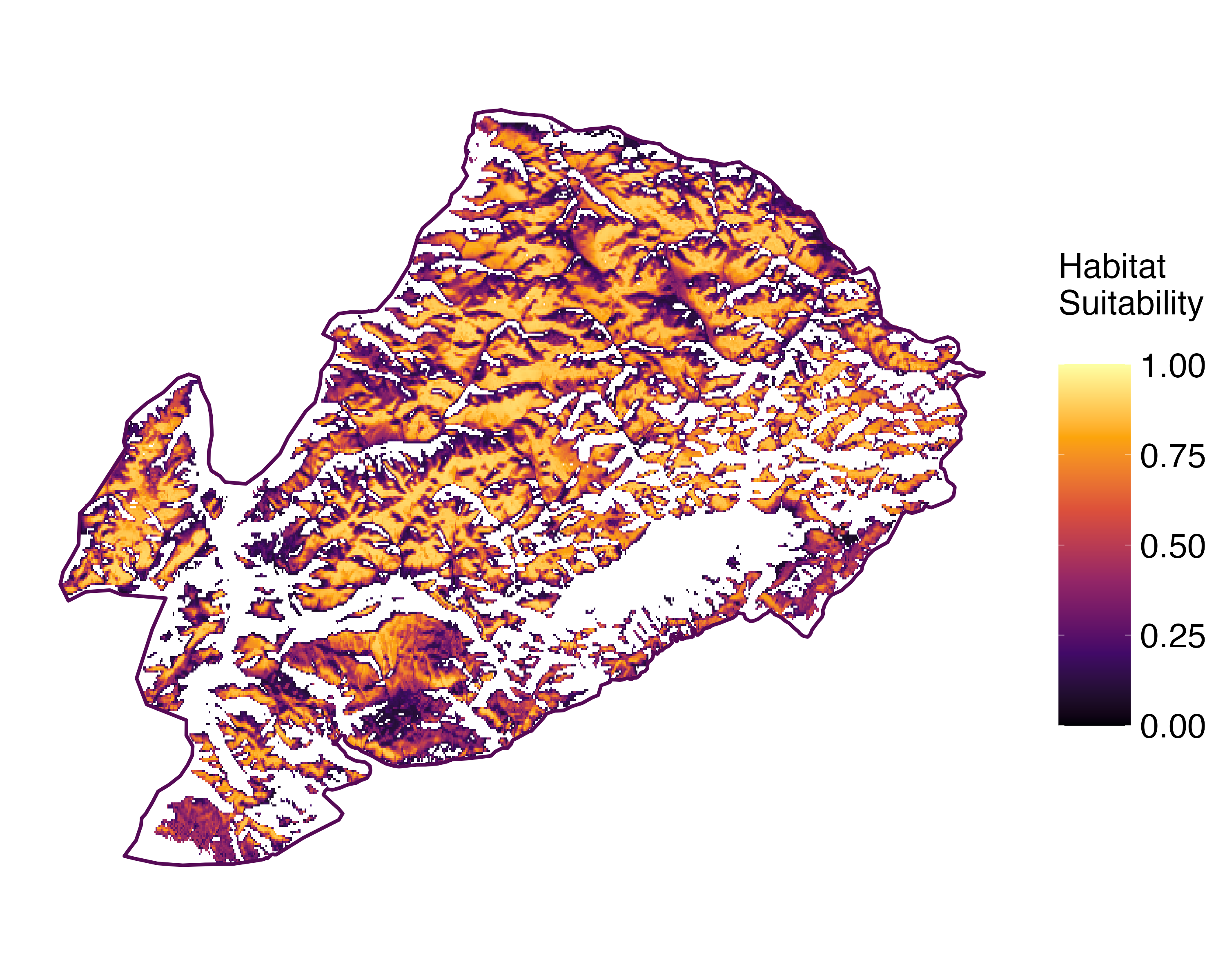 Future prediction (2071-2100) SSP 1-2.6
Future prediction (2071-2100) SSP 1-2.6 Future prediction (2071-2100) SSP 5-8.5Predictive maps according to Francesconi et al. 2025
Future prediction (2071-2100) SSP 5-8.5Predictive maps according to Francesconi et al. 2025
Growth form: Crustose
Substrata: soil, terricolous mosses, and plant debris
Photobiont: green algae other than Trentepohlia
Reproductive strategy: mainly sexual
Commonnes-rarity: (info)
Alpine belt: rather common
Subalpine belt: common
Montane belt: absent
Dry submediterranean belt: absent
Humid submediterranean belt: absent
Padanian area: absent
pH of the substrata:
| 1 | 2 | 3 | 4 | 5 |
Solar irradiation:
| 1 | 2 | 3 | 4 | 5 |
Aridity:
| 1 | 2 | 3 | 4 | 5 |
Eutrophication:
| 1 | 2 | 3 | 4 | 5 |
Poleotolerance:
| 0 | 1 | 2 | 3 |
Altitudinal distribution:
| 1 | 2 | 3 | 4 | 5 | 6 |
Rarity
absent
extremely rare
very rare
rare
rather rare
rather common
common
very common
extremely common
Loading data...
Occurrence data
Predictive map
 Current prediction (1981-2010)
Current prediction (1981-2010) Future prediction (2071-2100) SSP 1-2.6
Future prediction (2071-2100) SSP 1-2.6 Future prediction (2071-2100) SSP 5-8.5
Future prediction (2071-2100) SSP 5-8.5Predictive maps according to Francesconi et al. 2025


